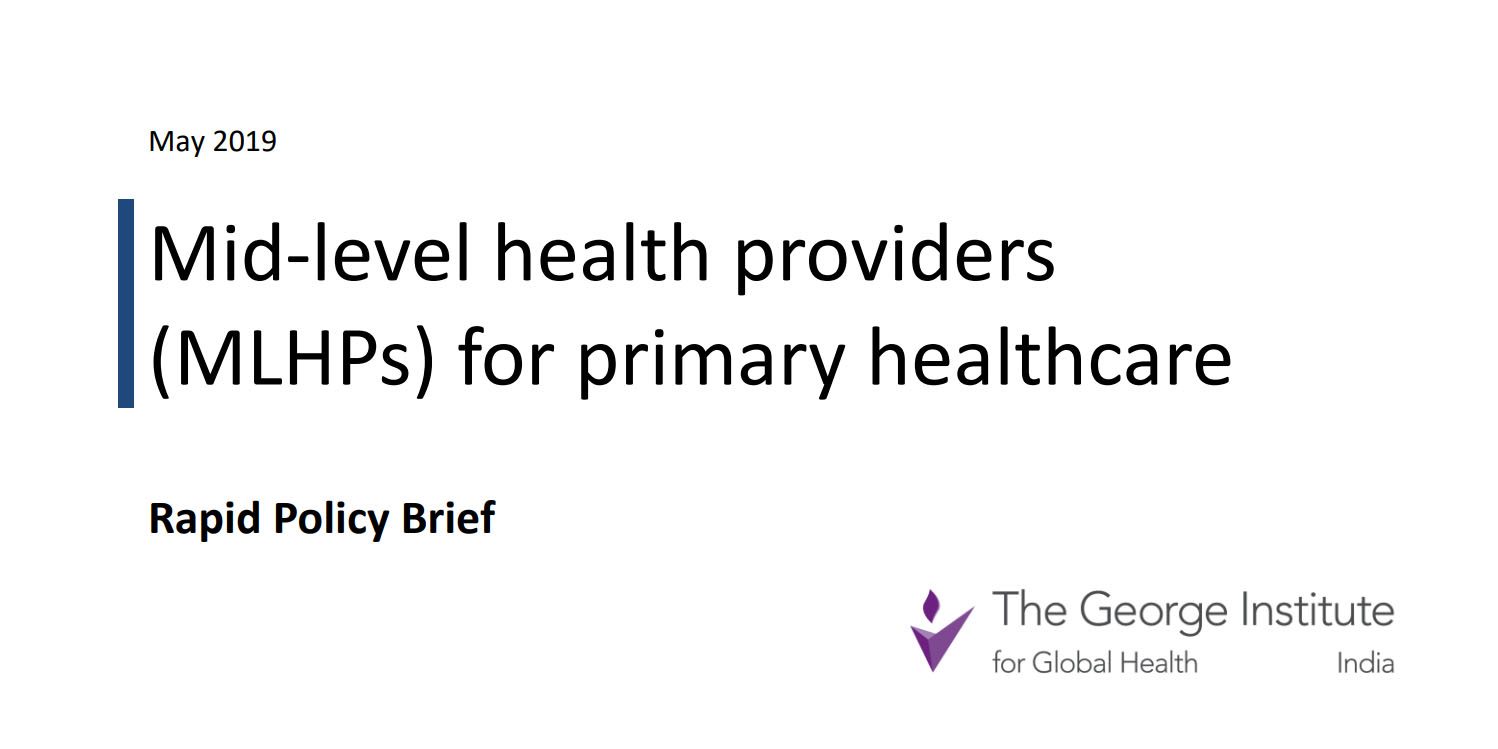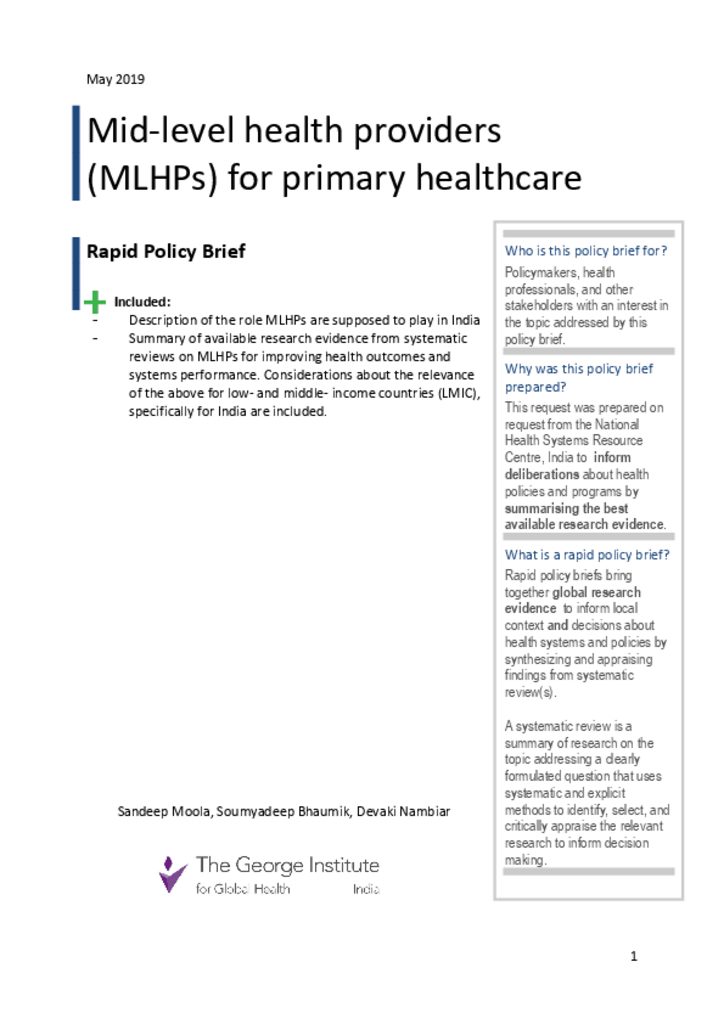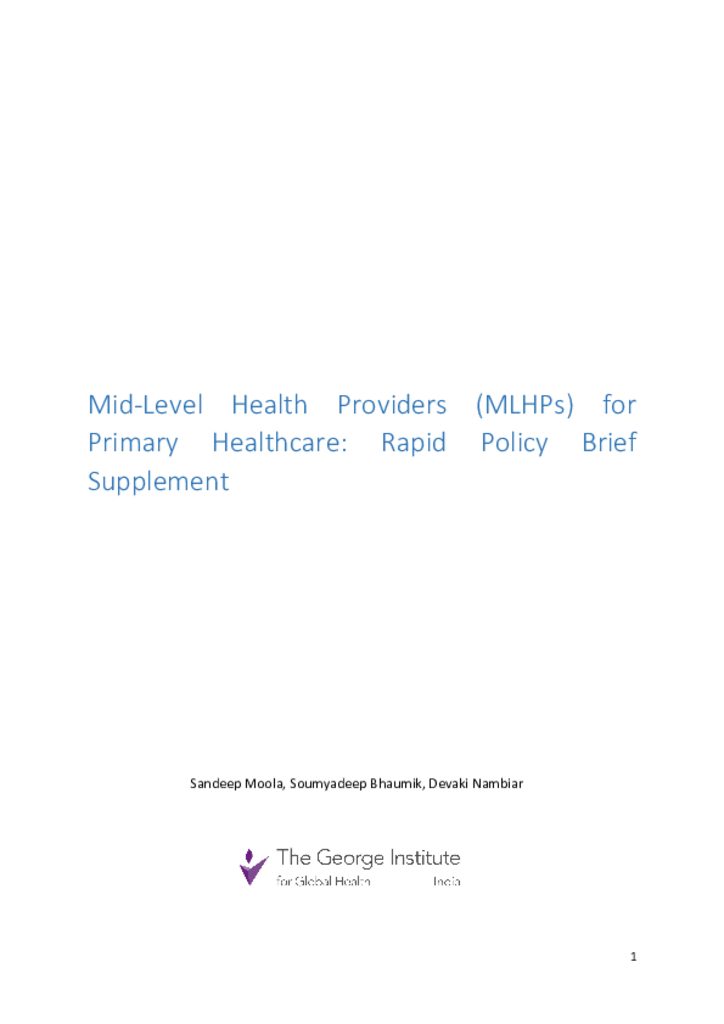
Rapid Policy Brief: Mid-level health providers (MLHPs) for primary healthcare
Summary of available research evidence from systematic reviews on MLHPs for improving health outcomes and systems performance. Considerations about the relevance of the above for low- and middle- income countries (LMIC), specifically for India are included.
Download 'Rapid Policy Brief for Mid-level health providers (MLHPs) for primary healthcare' (PDF 1 MB)
Download 'Mid-Level Health Providers (MLHPs) for Primary Healthcare: Rapid Policy Brief Supplement' (PDF 1.71 MB)
The Government of India, in its bid to achieve Universal Health Coverage has in 2018 rolled out an ambitious health systems reform plan called Ayushman Bharat (AB). The reform has two broad components – a hospitalisation insurance scheme and the transformation of sub- health centres and primary health centres into Health and Wellness Centers (HWC). One key pillar of rolling out the AB-HWC component is the inclusion of new health cadre - referred to as the Mid-level Health Provider (MLHP), defined as “a BSc. in Community Health or a Nurse (GNM or B.SC) or an Ayurveda practitioner, trained and certified through IGNOU/other State Public Health/ Medical Universities for a set of competencies in delivering public health and primary health care services”.
HWCs are to be resourced by teams led by MLHPs (also called Community Health Officers (CHOs)) who supervise Auxiliary Nurse Midwives (ANMS) and frontline health workers, or ASHAs and will be responsible for delivering the twelve packages of care that India’s CPHC program encompasses, namely, pregnancy and childbirth, neonatal and infant health services, childhood and adolescent health services, communicable diseases, non-communicable diseases, elderly and palliative care, oral health care, ophthalmic and ENT care, mental health and emergency medical services.
This policy brief, prepared on request from the National Health Systems Resource Centre India, informs deliberations about health policies and programs by summarising the best available research evidence.





